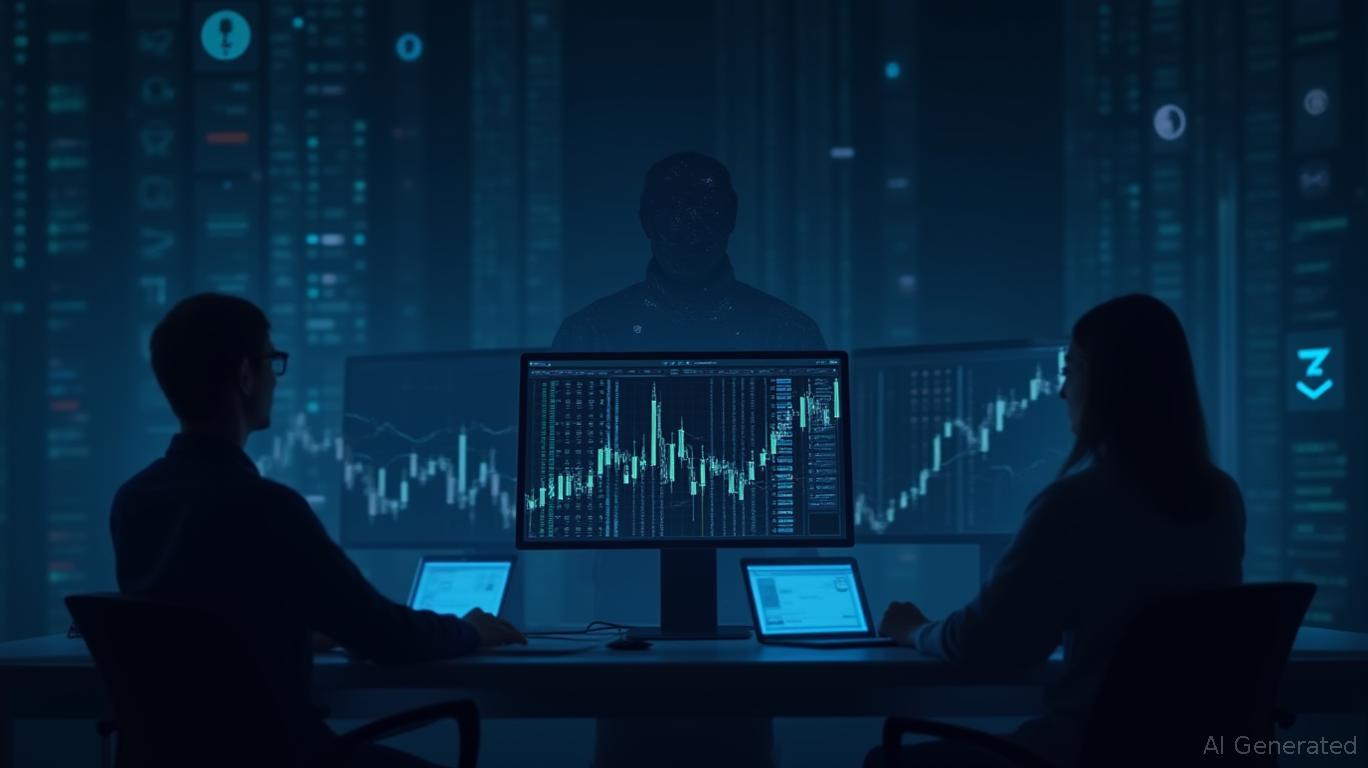Ethereum Updates: BullZilla Achieves 2,381% Return Despite Meme Coin Slump
- BullZilla ($BZIL) defies crypto market selloff with 2,381% ROI projections, contrasting Ethereum (ETH) and Pepe (PEPE)’s double-digit declines. - Structured tokenomics, including deflationary burns and staking rewards, drive BullZilla’s presale growth, now in Stage 8D with $1M raised. - Ethereum’s 2.45% drop reflects broader market corrections, while Pepe’s 5.92% slump signals waning retail enthusiasm for meme coins. - Analysts highlight BullZilla’s transparent mechanics as a "structured opportunity," th
The October downturn in the cryptocurrency sector has highlighted a clear split between established blue-chip coins and up-and-coming

BullZilla’s rapid ascent is attributed to its carefully designed tokenomics, featuring a dynamic pricing model, staking incentives, and a deflationary burn system that decreases supply with every trade. The project has already raised over $1 million and drawn in 3,300 holders, with the next stage set for a 3.13% price increase. Experts at
Despite this, the wider meme coin market is showing signs of exhaustion. Pepe, once a social media sensation, now faces new rivals like AlphaPepe (ALPE), which merges meme appeal with high-level security and real-time staking rewards, as highlighted in a
Ethereum’s recent decline mirrors broader market corrections amid cooling ETF excitement and rising Treasury yields. Even with the pullback, Ethereum continues to serve as the foundation of decentralized finance (DeFi), supporting 30% of new Q4 protocols. While institutions remain confident, retail investors are increasingly shifting funds to new projects, seeking more structured growth in a fragmented market.
Among these new offerings, BullZilla’s unique structure is particularly notable. The data-driven strategy aims to set BullZilla apart from the often speculative nature of traditional meme coins, positioning it as a blend of entertainment and finance.
However, the increased interest in such projects carries its own risks. While BullZilla’s tokenomics have been audited and are transparent, the overall crypto environment remains unpredictable, with coins like
For those investing, the main question is whether BullZilla can maintain its current momentum. With a 3.13% price increase coming in the next stage and a planned November listing, the future will reveal if the project can turn excitement into lasting value. As one analyst remarked, "BullZilla isn’t just following the latest meme trend—it’s laying the groundwork for the next bull market."
Disclaimer: The content of this article solely reflects the author's opinion and does not represent the platform in any capacity. This article is not intended to serve as a reference for making investment decisions.
You may also like
Solana News Today: "While Zcash Surges, Ghostware Quietly Advances Scalable Solutions on Solana"
- Privacy-focused crypto tokens like $GHOST and $EYE gain traction amid market volatility, driven by demand for verifiable infrastructure and scalable solutions. - A major whale's $16.7M investment in $GHOST and GhostwareOS's Solana-based privacy modules highlight growing institutional confidence in the ecosystem. - Solana ETFs attract $421M in inflows, contrasting broader crypto outflows, while $EYE's renewable energy-AI hybrid model offers tangible asset-backed returns. - Zcash's 1,000% surge underscores

BNB News Today: Apriori Suffers 80% Token Loss, Raising Concerns Over Crypto Airdrop Security and Trust
- Apriori's BNB Chain airdrop lost 80% of tokens to a Sybil group via 5,800 interconnected wallets funded by 13 addresses. - The attack exploited pre-announcement timing and empty wallets, undermining trust in the project's fair distribution claims. - APR token price fell over 60% post-incident, mirroring similar Sybil exploits at MYX Finance and zkSync that siphoned millions. - Experts demand stronger anti-fraud measures like multi-factor checks as BNB Chain faces scrutiny over recent security lapses.

Pfizer Files Lawsuit Against Novo: Alleges Competitor Engaged in Antitrust Scheme to Dominate Obesity Market
- Pfizer sues Novo Nordisk and Metsera in Delaware courts, alleging anticompetitive tactics to block its $7.2B obesity drug acquisition. - Novo's $8.5B superior bid for Metsera's GLP-1 pipeline—valued at $5B peak sales—triggers legal claims over regulatory bypass and contract violations. - Pfizer leverages early FTC approval for its deal, seeking court orders to force a November 13 shareholder vote amid patent expiration threats. - The dispute highlights $150B obesity market stakes, with Novo defending its

Hidden Leverage and External Party Risks Lead to XUSD Downfall
- Stream Finance's XUSD stablecoin collapsed to $0.30, freezing $160M in user funds after a $93M loss linked to an external fund manager. - The crisis followed a $100M exploit at Balancer Protocol, amplifying DeFi market anxiety and triggering rapid fund withdrawals. - Stream's high-leverage model and hidden $520M TVL vs. $160M actual deposits raised red flags about risky third-party fund usage. - XUSD's collapse exposed DeFi vulnerabilities, reigniting debates on third-party risks and urging audits for pr
